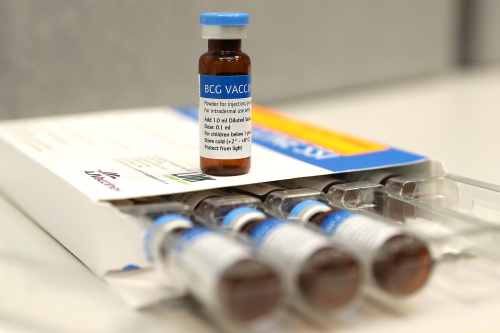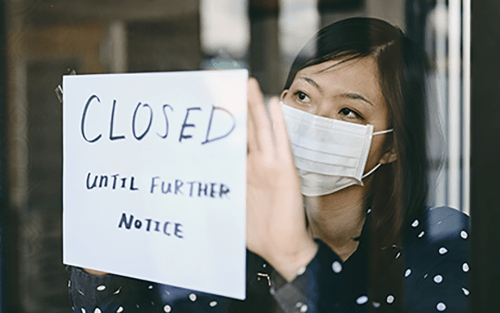Finally, Some Signs of Improvement in the Regional Economy

The Federal Reserve Bank of New York’s June business surveys show some signs of improvement in the regional economy. Following two months of unprecedented decline due to the coronavirus pandemic, indicators of business activity point to a slower pace of contraction in the service sector and signs of a rebound in the manufacturing sector. Even more encouraging, as the regional economy has begun to reopen, many businesses have started to recall workers who were laid off or put on furlough since the start of the pandemic. Some have even hired new workers. Moreover, businesses expect to recall even more workers over the next month. Looking ahead, firms have become increasingly optimistic that conditions will improve in the coming months.
Treasury Market Liquidity and the Federal Reserve during the COVID‑19 Pandemic
Inflation Expectations in Times of COVID‑19

As an important driver of the inflation process, inflation expectations must be monitored closely by policymakers to ensure they remain consistent with long-term monetary policy objectives. In particular, if inflation expectations start drifting away from the central bank’s objective, they could become permanently “un-anchored” in the long run. Because the COVID-19 pandemic is a crisis unlike any other, its impact on short- and medium-term inflation has been challenging to predict. In this post, we summarize the results of our forthcoming paper that makes use of the Survey of Consumer Expectations (SCE) to study how the COVID-19 outbreak has affected the public’s inflation expectations. We find that, so far, households’ inflation expectations have not exhibited a consistent upward or downward trend since the emergence of the COVID-19 pandemic. However, the data reveal unprecedented increases in individual uncertainty—and disagreement across respondents—about future inflation outcomes. Close monitoring of these measures is warranted because elevated levels may signal a risk of inflation expectations becoming unanchored.
Does the BCG Vaccine Protect Against Coronavirus? Applying an Economist’s Toolkit to a Medical Question

As COVID-19 has spread across the globe, there is an intense search for treatments and vaccines, with numerous trials running in multiple countries. Several observers and prominent news outlets have noticed that countries still administering an old vaccine against tuberculosis—the Bacillus Camille-Guerin (BCG) vaccine—have had fewer coronavirus cases and fewer deaths per capita in the early stages of the outbreak. But is that correlation really strong evidence that the BCG vaccine provides some defense against COVID-19? In this post, we look at the incidence of coronavirus cases along the former border between East and West Germany, using econometric techniques to investigate whether historical differences in vaccination policies account for the lower level of infection in the former East.
W(h)ither U.S. Crude Oil Production?
Treasury Market Liquidity during the COVID‑19 Crisis

A key objective of recent Federal Reserve policy actions is to address the deterioration in financial market functioning. The U.S. Treasury securities market, in particular, has been the subject of Fed and market participants’ concerns, and the venue for some of the Fed’s initiatives. In this post, we evaluate a basic metric of market functioning for Treasury securities—market liquidity—through the first month of the Fed’s extraordinary actions. Our particular focus is on how liquidity in March 2020 compares to that observed over the past fifteen years, a period that includes the 2007-09 financial crisis.
New York Fed Surveys: Business Activity in the Region Sees Historic Plunge in April

Indicators of regional business activity plunged to historic lows in early April, as efforts to slow the spread of the coronavirus kept many people at home and shut down large parts of the regional economy, according to the Federal Reserve Bank of New York’s two business surveys. The headline index for both surveys plummeted to nearly -80, well below any historical precedent including the depths of the Great Recession. About 60 percent of service firms and more than half of manufacturers reported at least a partial shutdown of their operations thus far. Layoffs were widespread, with half of all businesses surveyed reporting lower employment levels in early April.
The COVID‑19 Pandemic and the Fed’s Response
Helping State and Local Governments Stay Liquid

On April 9, the Federal Reserve announced up to $2.3 trillion in new support for the economy in response to the coronavirus pandemic. Among the initiatives is the Municipal Liquidity Facility (MLF), intended to support state and local governments. The details of the facility are described in the term sheet. The state and local sector is a unique but very important part of the economy. This post lays out some of the economics of the sector and the needs that the facility intends to satisfy.














 RSS Feed
RSS Feed Follow Liberty Street Economics
Follow Liberty Street Economics